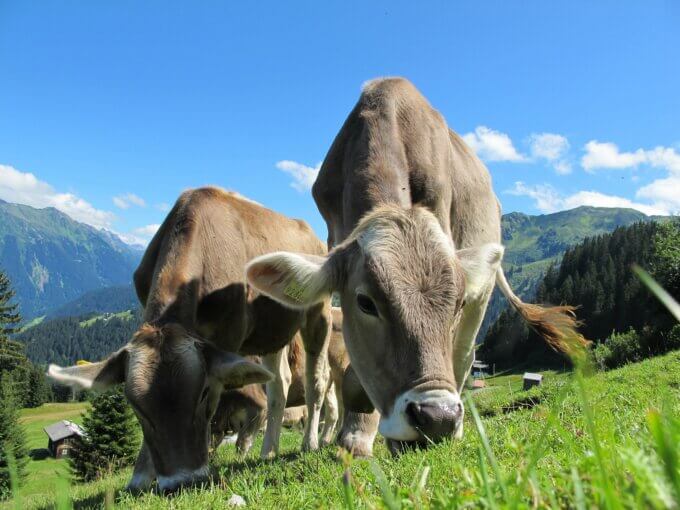Be social! Share the fun!

Gruner Veltliner Vs. Albariño: Can you Detect the Difference?
Are you curious about the difference between Albariño and Gruner Veltliner?
These are both excellent examples of crisp, dry, white wines.
What Gruner Veltliner and Albariño Have in Common
As these two wines come from different countries, with different climates, and different grape varieties one wonders why any confusion can exist.
Blind Tasting
Yet when blind tasting these two wines, you will not have any sign of the country of origin.
For example, in the Masters of Wine educational program, they might present you with these two white wines blind with few clues.

Similar Wines to Gruner Veltliner and Albariño
Beyond Gruner Veltliner and Albariño, the flight may also include Chablis (Chardonnay from the French region of Burgundy, France), the Garganega grape from the Soave (Veneto) region of northern Italy … …the Cortese grape from the Gavi region in Piedmont, and even Vermentino, a grape from the island of Sardinia in Italy.Yet in looking at the Albariño and Gruner Veltliner, let’s note the similarities.
1. The color of both wines is white, but Gruner Veltliner is more pale. Albariño often has a slight pale yellow / pale gold hue. If you look closely, you may see a slight spritz of trapped C02 in both wines, left over from fermentation.The Spritz of CO2 …
This suggests the wines’ youth – by tradition both Albariño and Gruner Veltliner are typically consumed shortly after release. 2. Both are “dry” wines, meaning that they have no residual sugar. 3. Both wines have “high” acidity that can be more accurately described as “brisk.” 4. Both wines hover around 12.0—12.5 % abv. 5. Both wines are slightly “shy” in their aromas. Even though experts consider Albariño an “aromatic” variety, depending on the vintage the aromas can be subtle.Peach and Nectarine: A “True” Clue to Albariño?
In the Albariño, you may detect a vague hint of peach. But you really need to sniff deeply for this. Many wines have aromas of peach, so your better clue to the variety is the slight aroma of sea spray.
Albariño comes from the Spanish region of Rias Baixas, in the southwestern Galician region of Spain near the ocean.
Though scientists still debate how the scent of a nearby sea can infuse a wine, this hint of sea spray is a good clue to Albariño.
Decoding the Gruner Veltliner
The Gruner Veltliner, from high elevation regions in Austria, has less overt clues. During blind tasting sessions, some aspiring sommeliers recognize it by subtle aromas of Daikon radish.
This radish is the shredded white vegetable often served with your sushi.
In a hilarious passage in the book Cork Dork, author Bianca Bosker recalls a blind tasting session with sommeliers.
When one participant used the word “chervil” to describe the taste of Gruner Veltliner. This is French parsley … not very well known by Americans.
Now you might want to run off to the nearest supermarket to smell the herbs, fruits, and vegetables to use them in tasting notes.
But wait … using exotic fruit and vegetables in tasting notes can be helpful, but unnecessary.
And vivid fruit and vegetable descriptors are more in tune with the program offered by the Court of Master Sommeliers than the Master of Wine.
In the Master of Wine program, the focus is on structure of the wine (acid, tannin, alcohol, complexity, etc).
Heilgenstein Kamptal Gruner Veltliner 2013
Do Ferreiro Rias Baixas Albariño 2013
*I wrote this comparison in 2016.
In the Albariño, my notes reflected vibrant acidity, minerals, peach pit, and white flowers
“Albariño, yes a possibility,” I thought … but what else could it be?
The slight “spritz” from residual C02 in the Albariño wine was consistent with this variety, as was the aroma of peach pit.
The Gruner had more minerality and a hint of the mysterious “white pepper” many sommelier students associate with this grape variety.
Also Gruner Veltliner had a vague aroma of celery and lentil, another vegetable sommeliers associate with Gruner Veltliner.
Final Thoughts
Try blind tasting these two wines on your own. Be certain to keep the vintage year and price of both wines as similar as possible.
Have a friend pour them for you. Or cover the bottles (so you can’t identify the labels) while they chill in the refrigerator.
Then pour them for yourself to make the tasting as “blind” as possible.
Record your notes and create a spreadsheet for your findings.
You can see some complimentary videos on Albarino on the Guild of Sommeliers Website